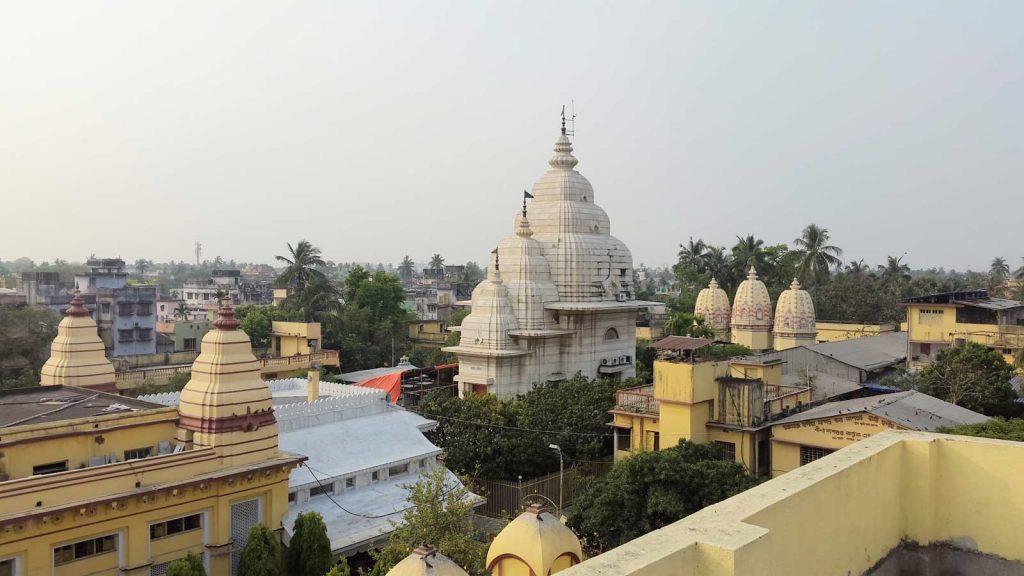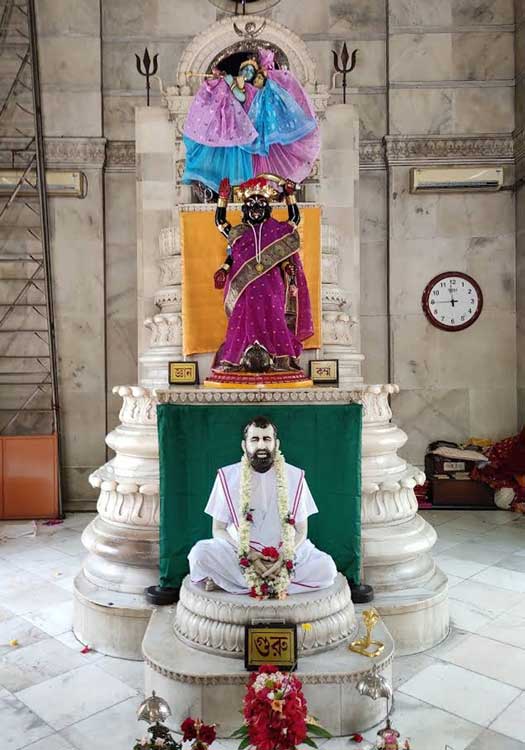
Architecture and Symbolism
The main temple of Adyapeath is unique in both its architecture and its symbolism. Made of immaculate white marble, it is really three temples nestled inside one another. The temple’s symbolism denotes not only the unity of all aspects of the Hindu faith, but the unity of all religions toward a common goal: humanity’s realization of God. Its spire combines Shiva’s Trident, the Moon and Star, the Cross, and the Hand Fan–the symbols of Hinduism, Islam, Christianity, and Buddhism respectively.
The Main Altar
Like the temple itself, the main
altar also takes a very unusual configuration: three altars, one atop the other, like stairsteps. On the bottom altar is a murthi of Sri Ramakrishna, with the word “Guru” inscribed nearby. On the middle altar is a replica of the
murthi of Adya Ma found by Annada Thakur in the Eden Garden. This murthi is made of eight metals. Nearby is inscribed “Knowledge and Work.” The topmost altar is adorned by the murthis of Radha and Krishna, known all over India as the Divine Couple. They are encircled by the sacred syllable om, and at their feet is inscribed the word “Love.” Thus love is the foremost virtue and the clearest path to God.
It is unusual indeed to find a single temple combining the worship of Kali (in the form of Adya Maa) and Radha-Krishna, deities that are usually worshipped by two different sects of Hindus. Once again, however, the Adyapeath temple erases the boundaries of sect or creed, revealing that God is One.
The temple is constructed in such a way that the altar is clearly visible in its entirety whenever the doors are opened. Thousands of pilgrims and visitors assemble daily to worship, pray, experience darshan, and receive prasadam. Religious songs and discourses are held every day in the nearby Natmandir (music hall). Adyapeath is considered one of the holiest of holy places not only in West Bengal but far beyond its border. Daily Worship
Daily pujas are performed in the traditional manner. The murthis are lovingly bathed and dressed, then offered flowers, sandal paste, incense, and food. The types and quantities of food offerings were dictated to Annada Thakur by Sri Ramakrishna in dreams, and these instructions are still strictly followed today. Because the temple itself is rather small inside, the food offerings are made in the nearby Bhog Ghar, a separate building in full view of the temple altar. The food thus blessed by having been offered is then distributed as prasad to all visitors.

